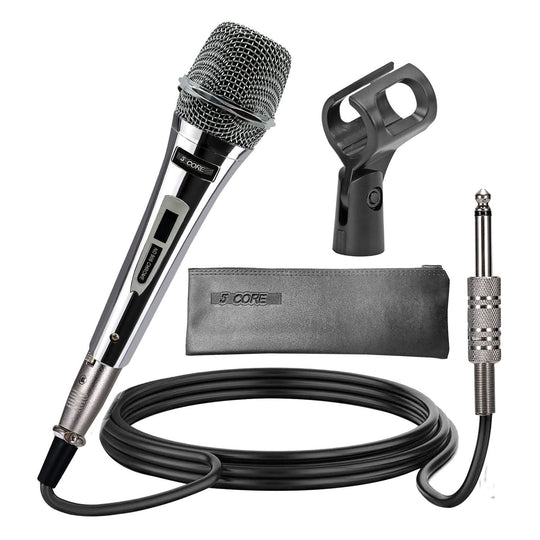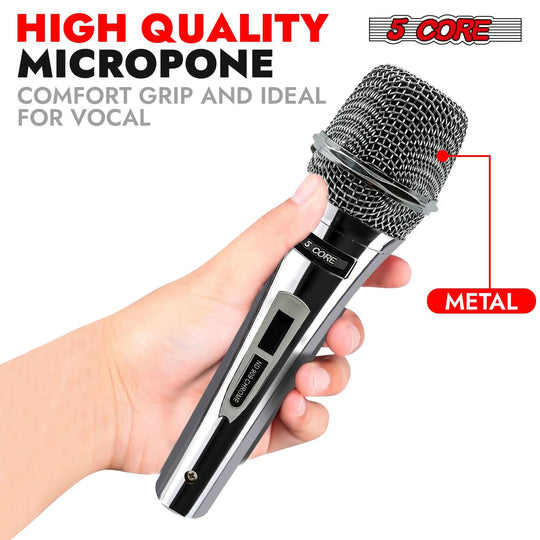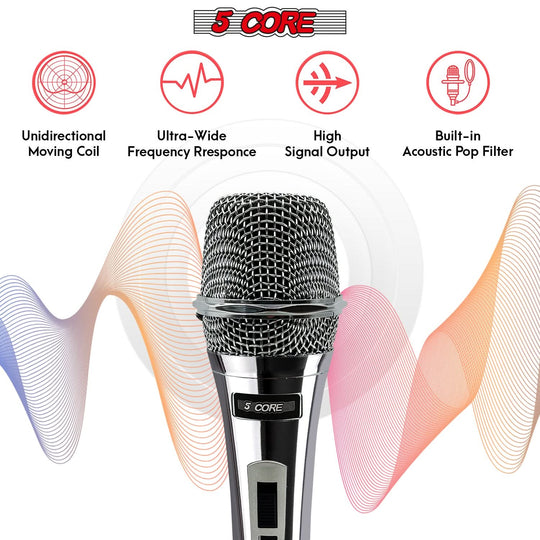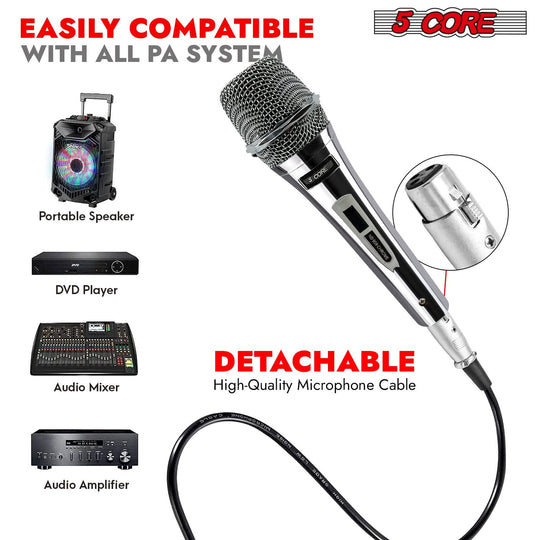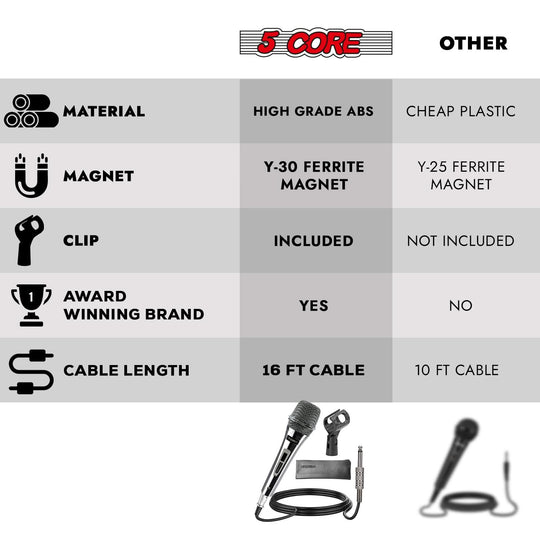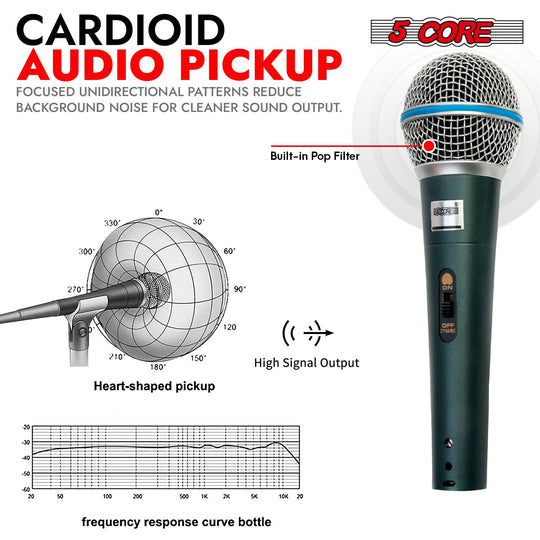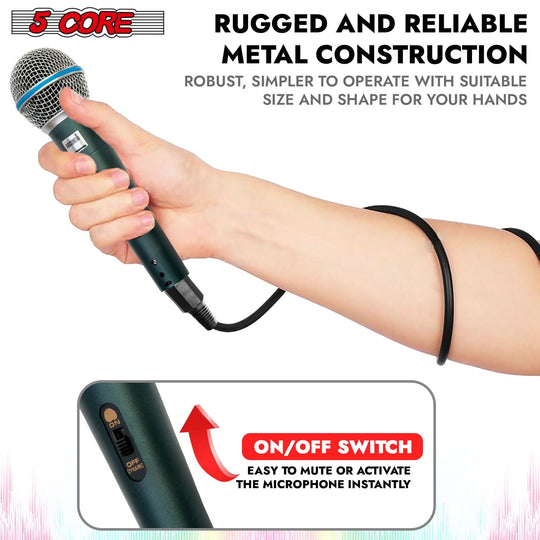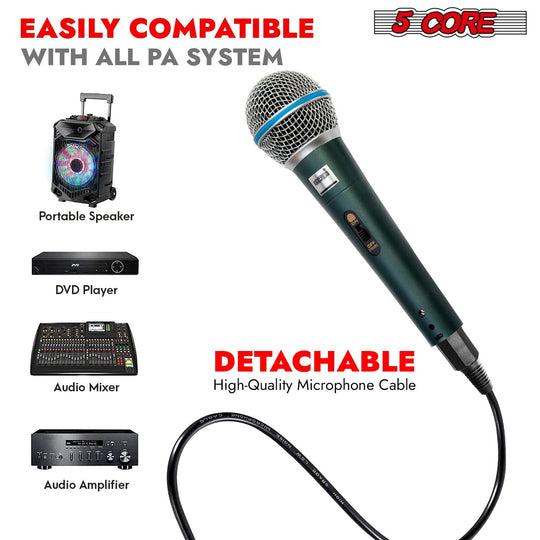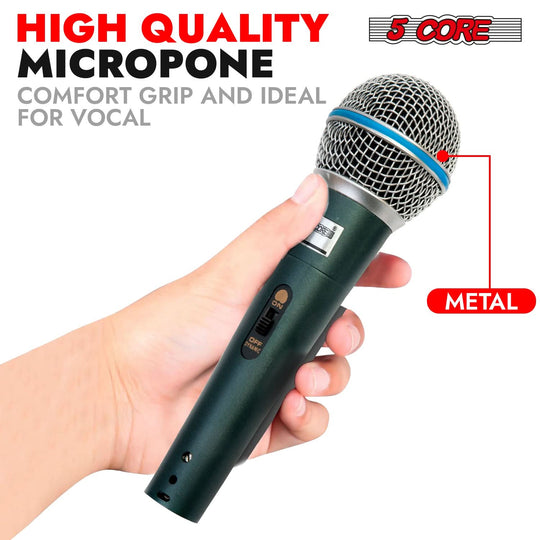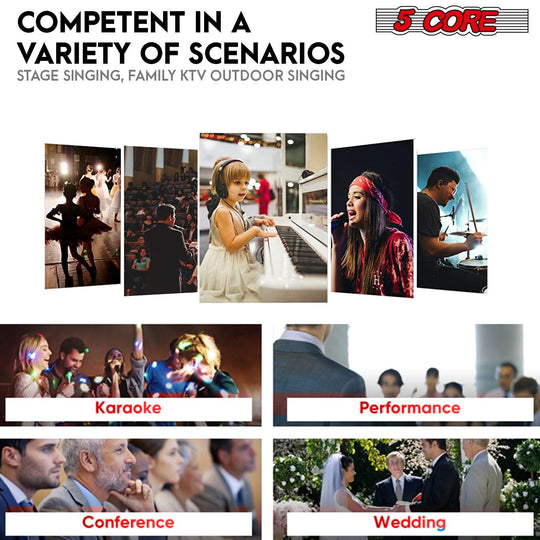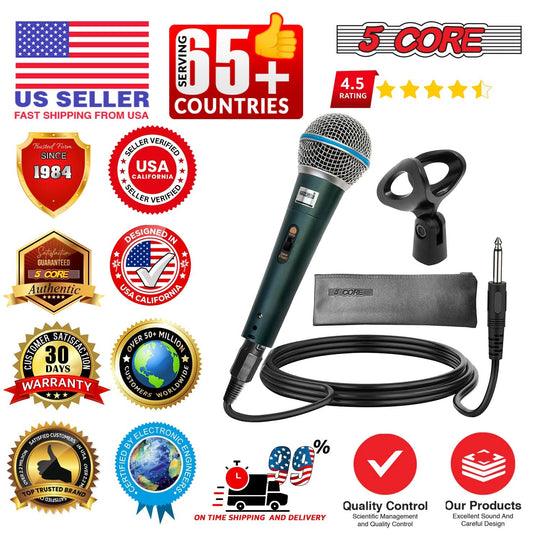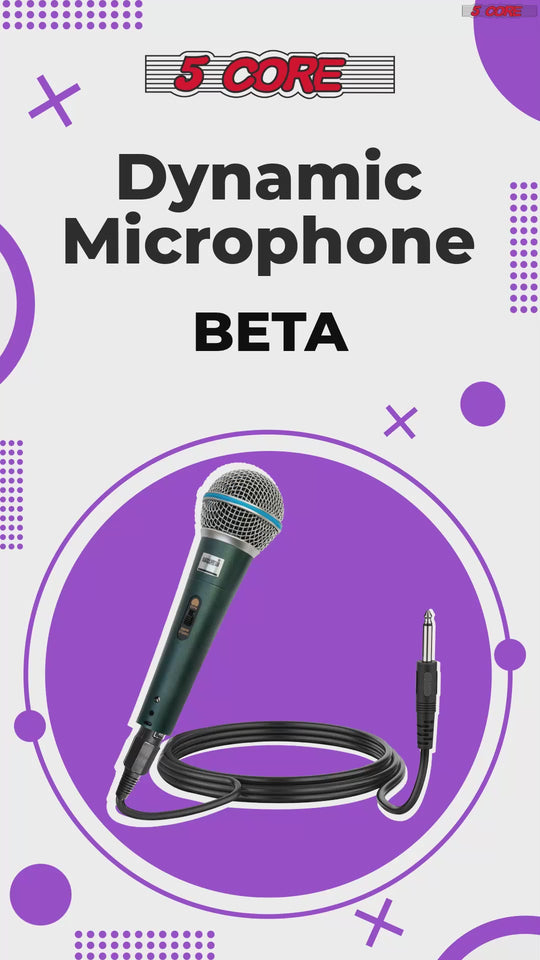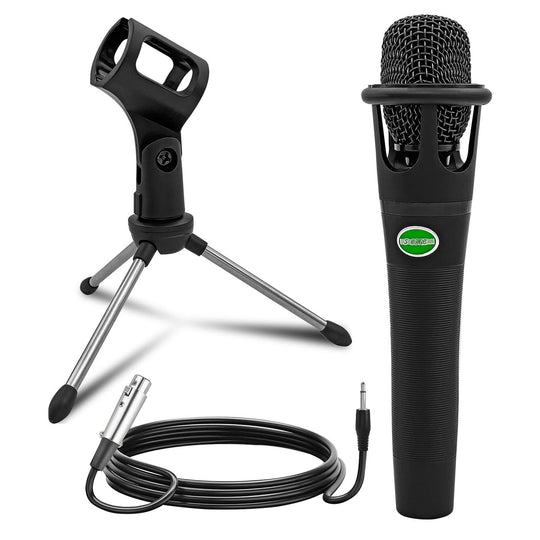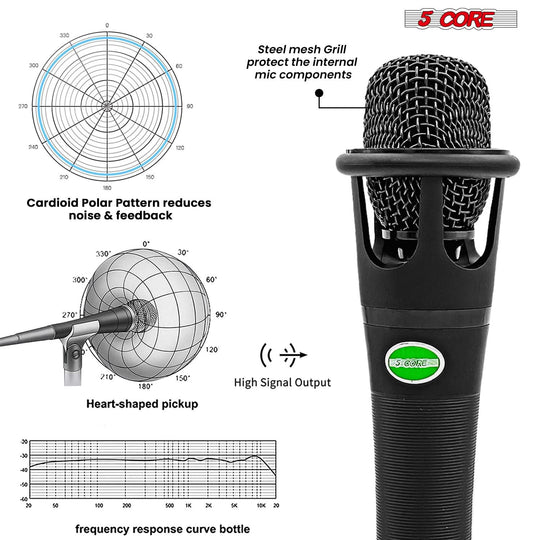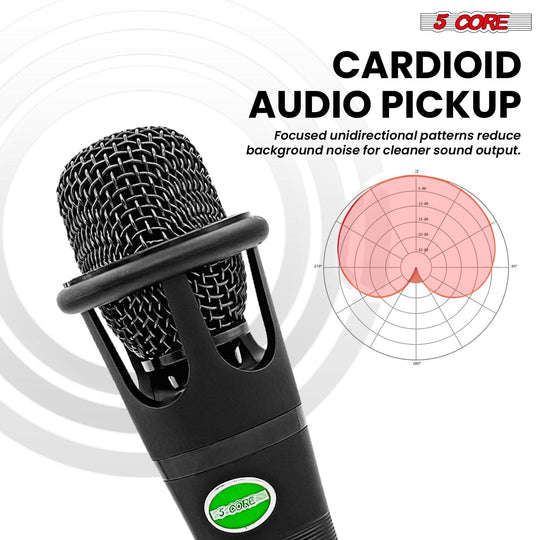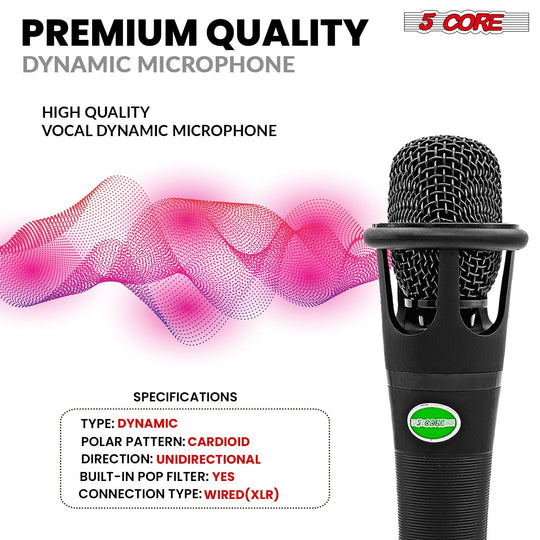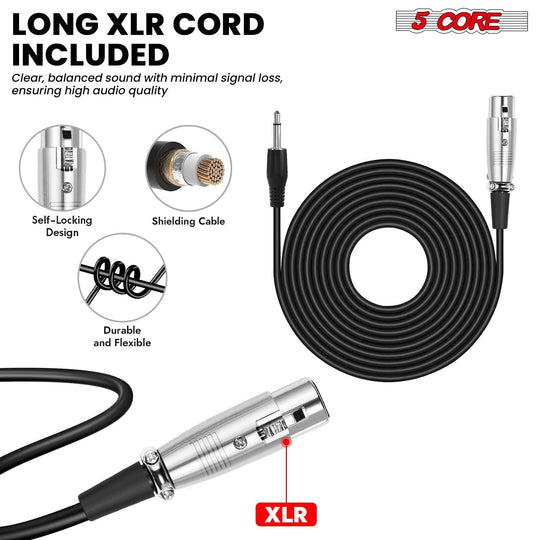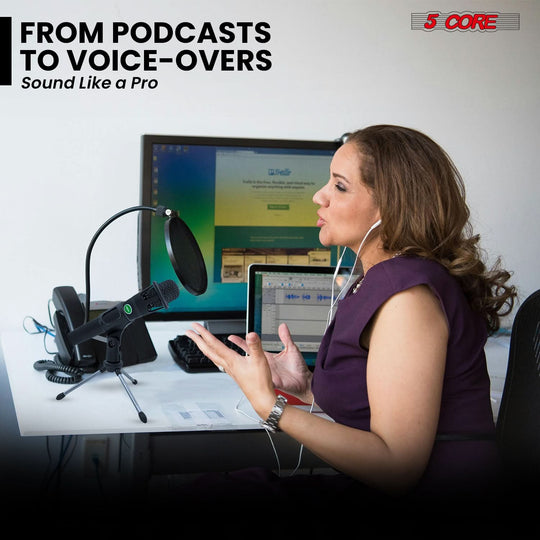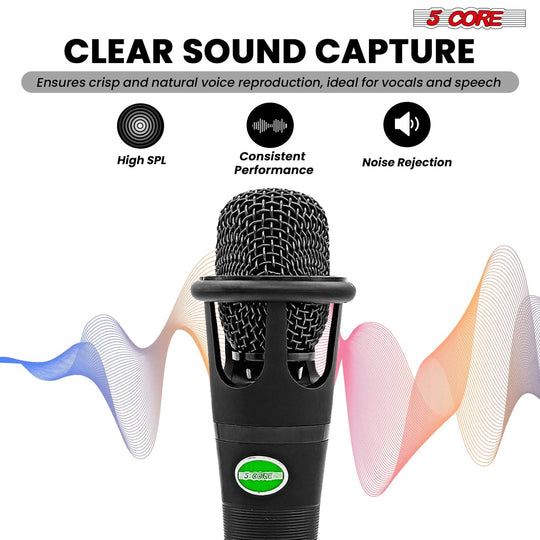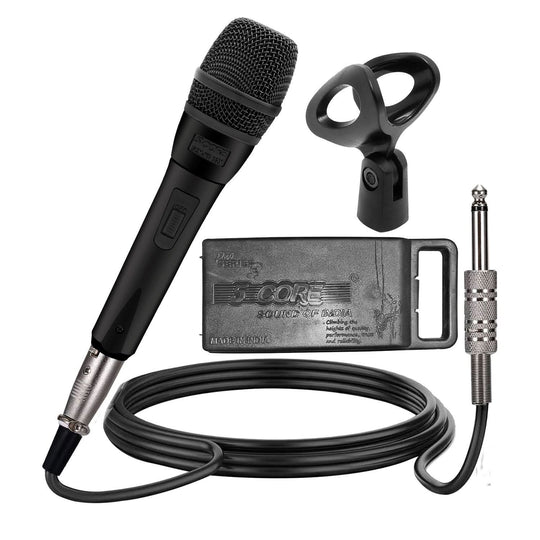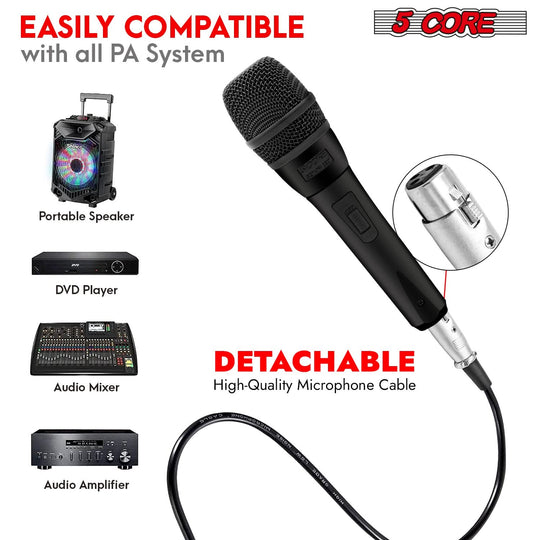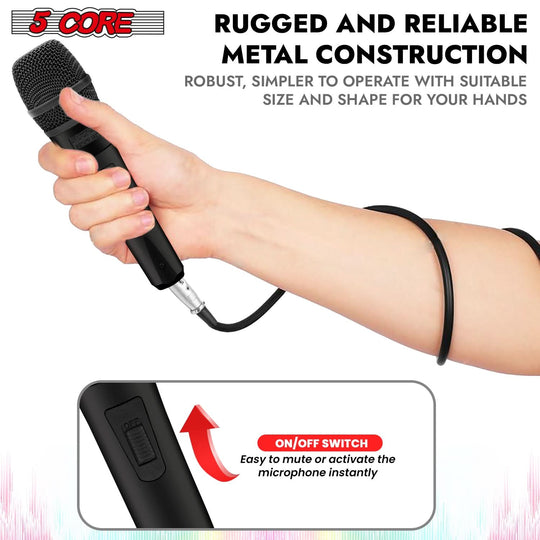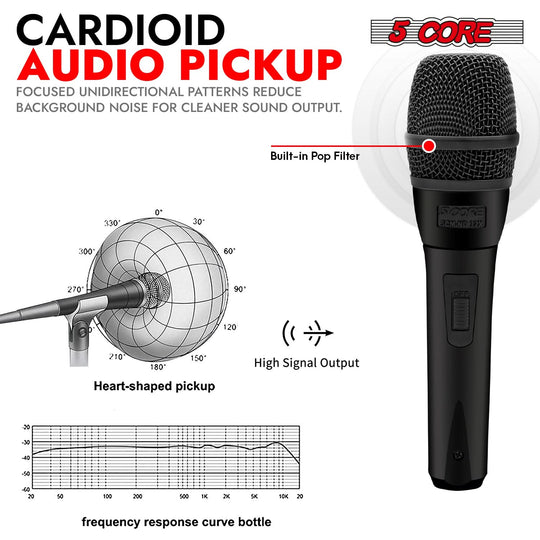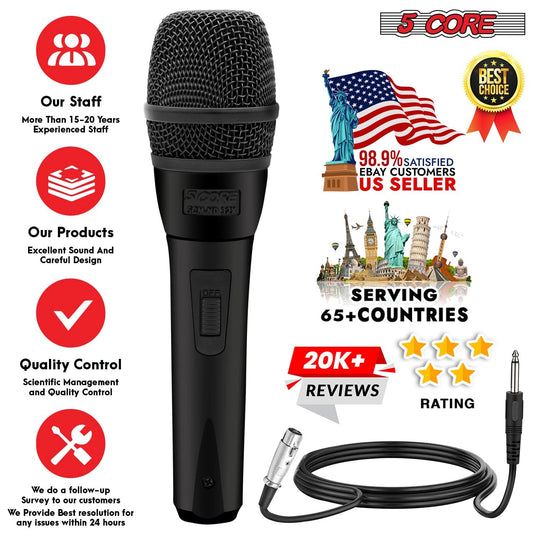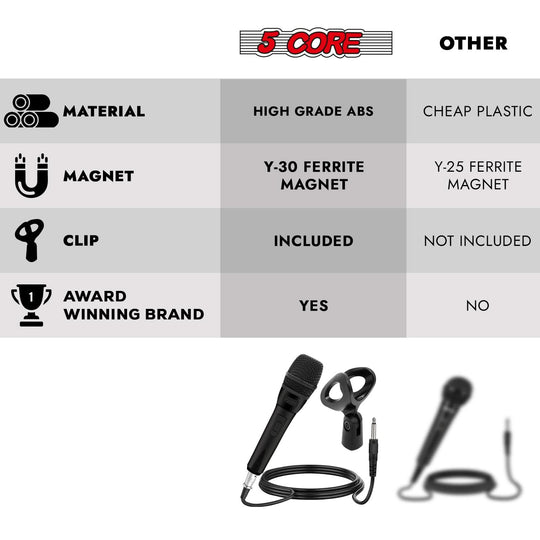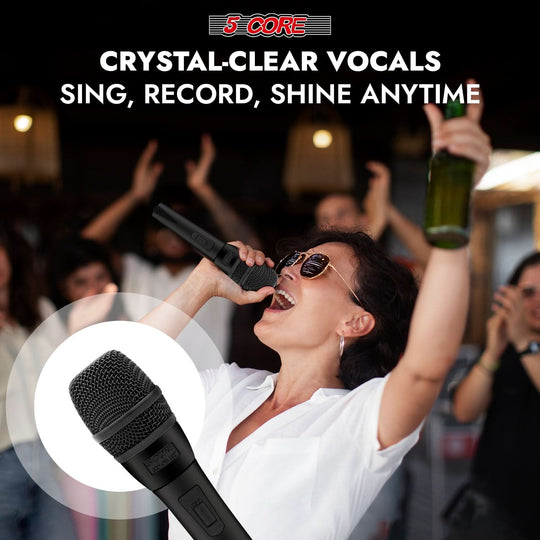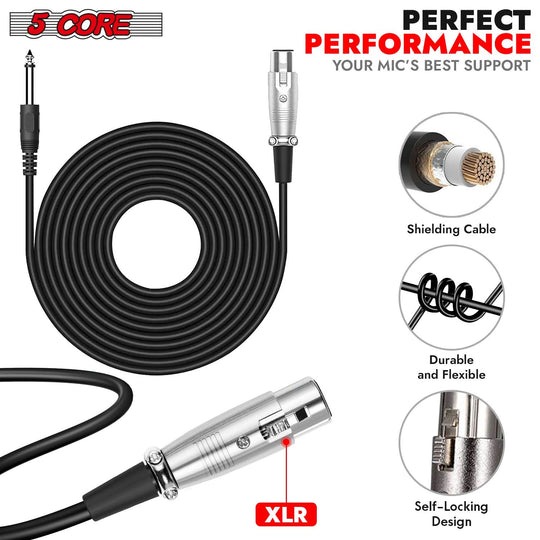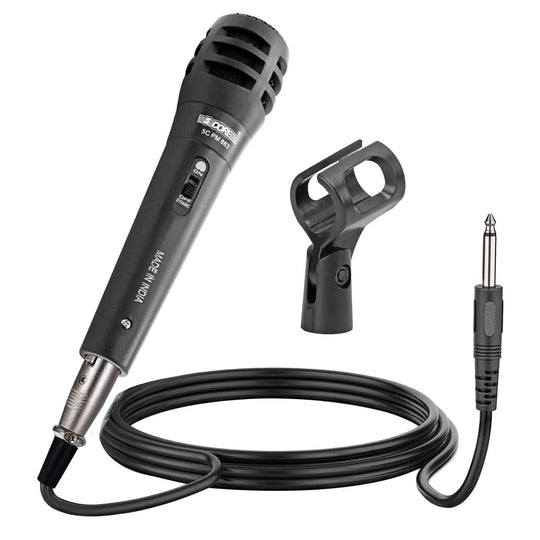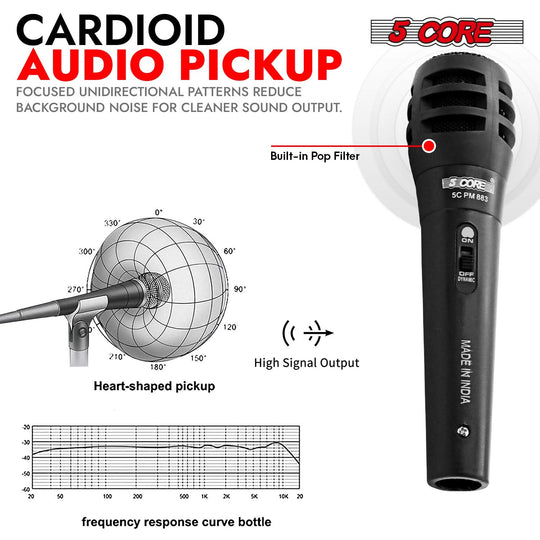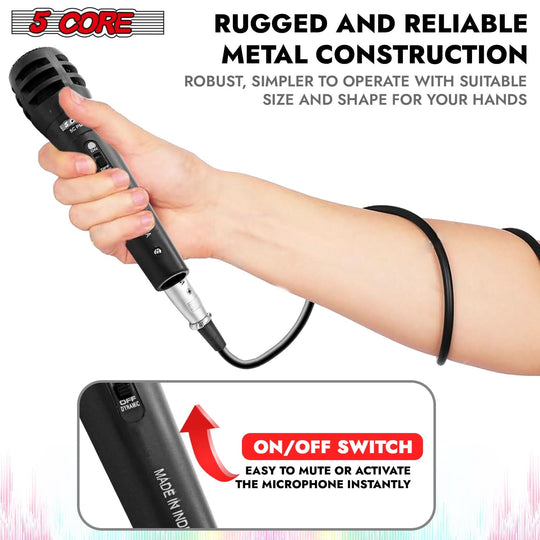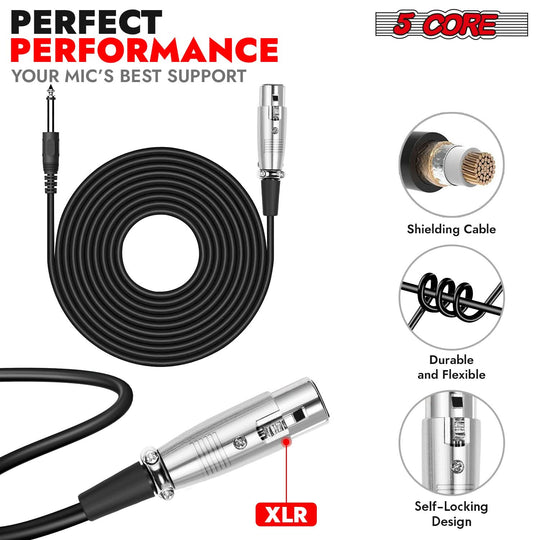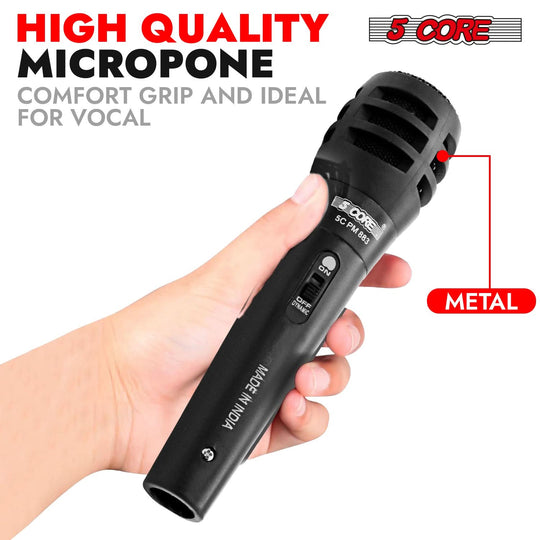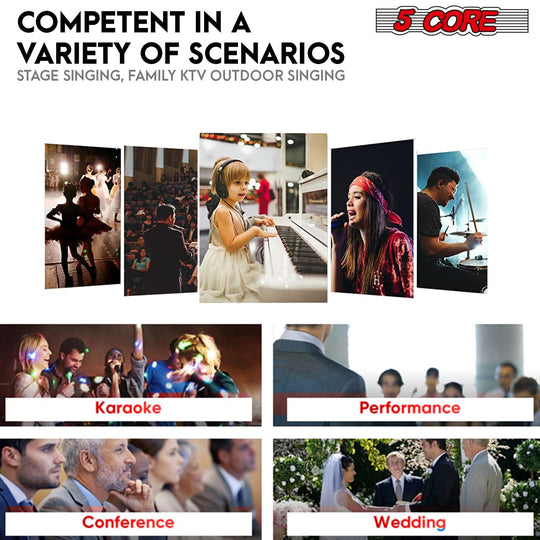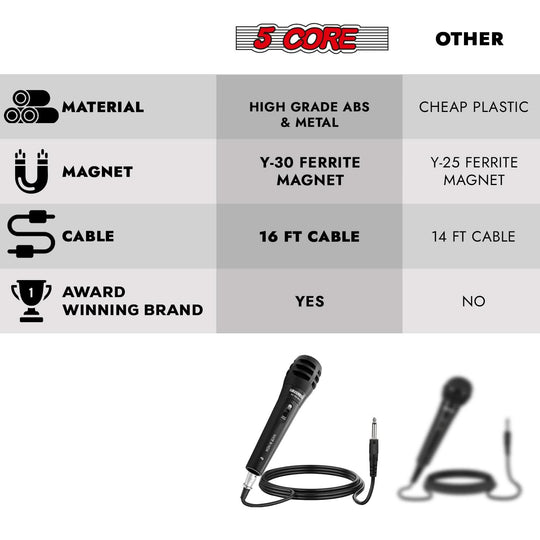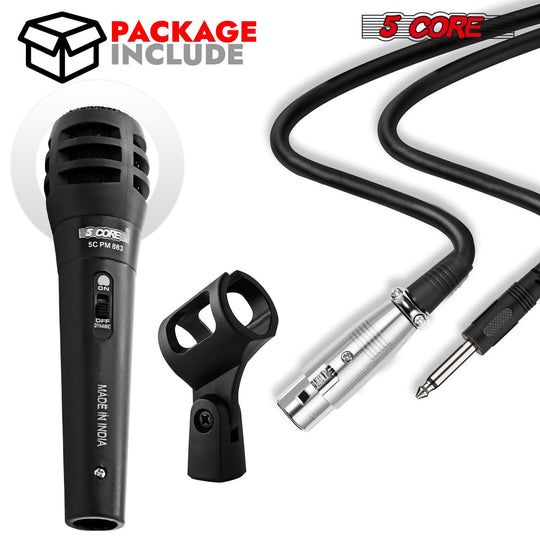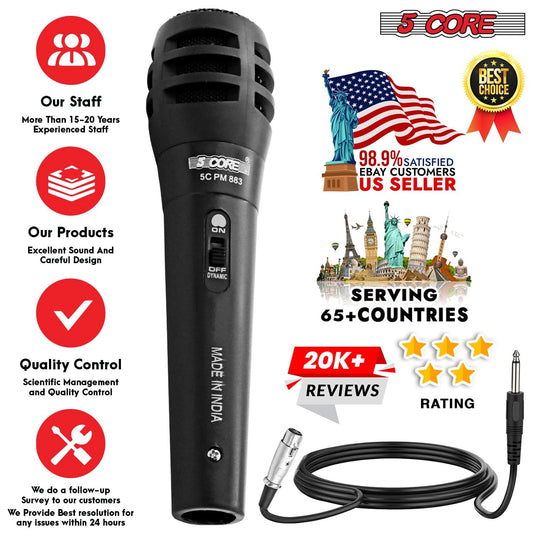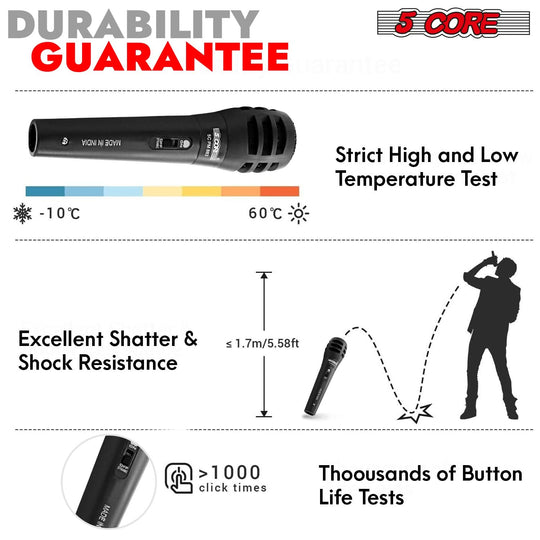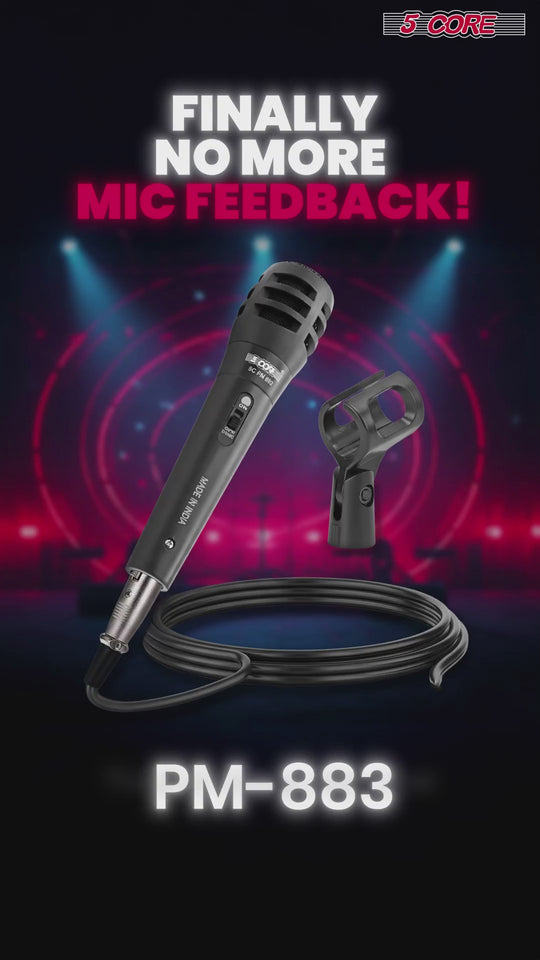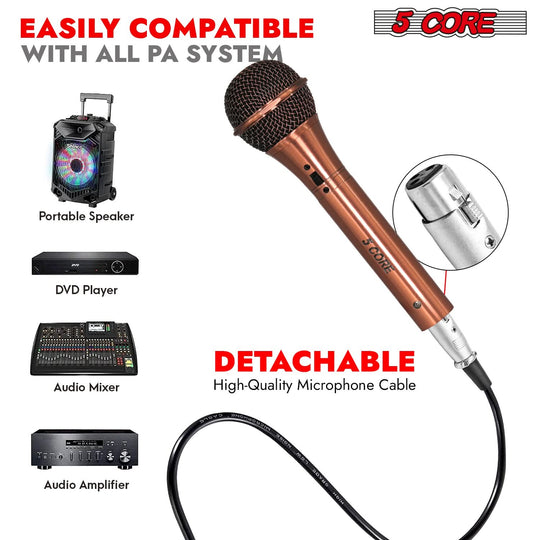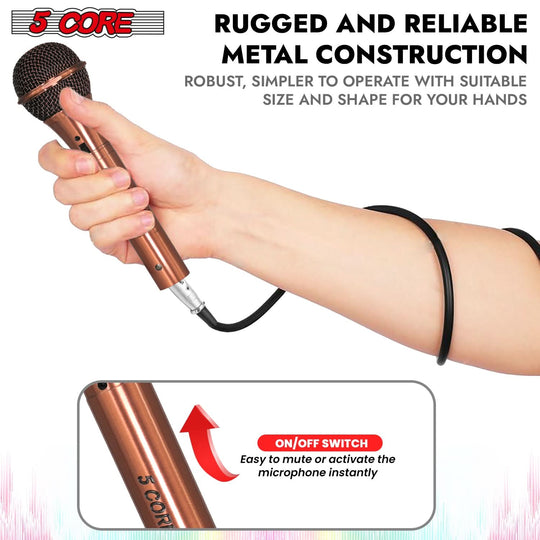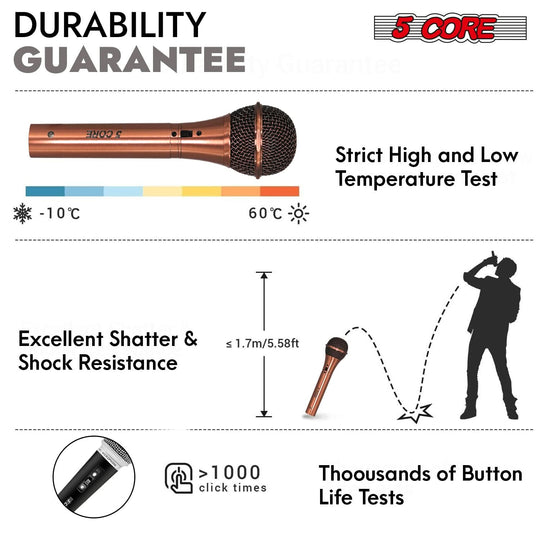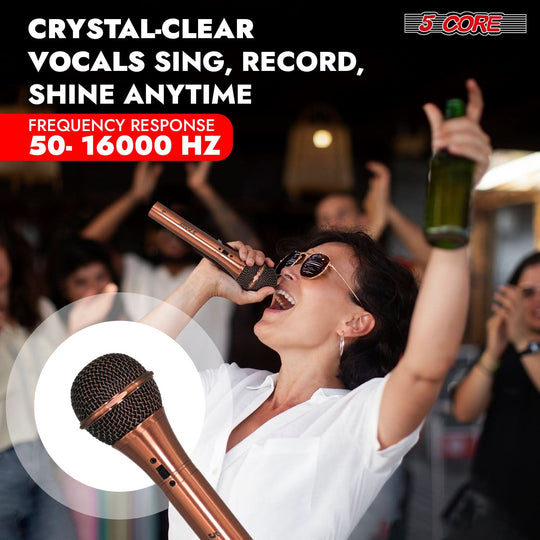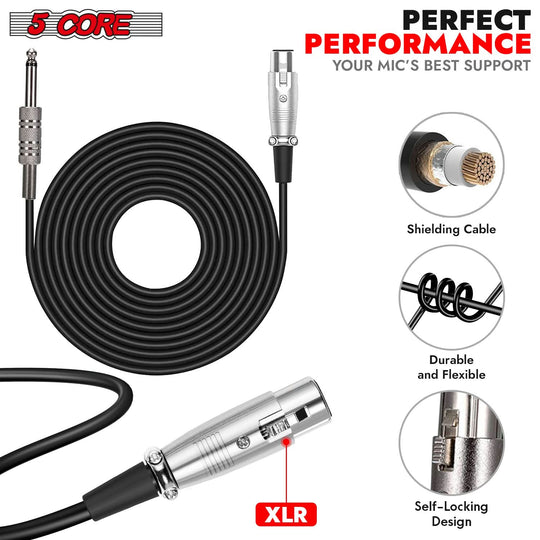Filtrar y ordenar
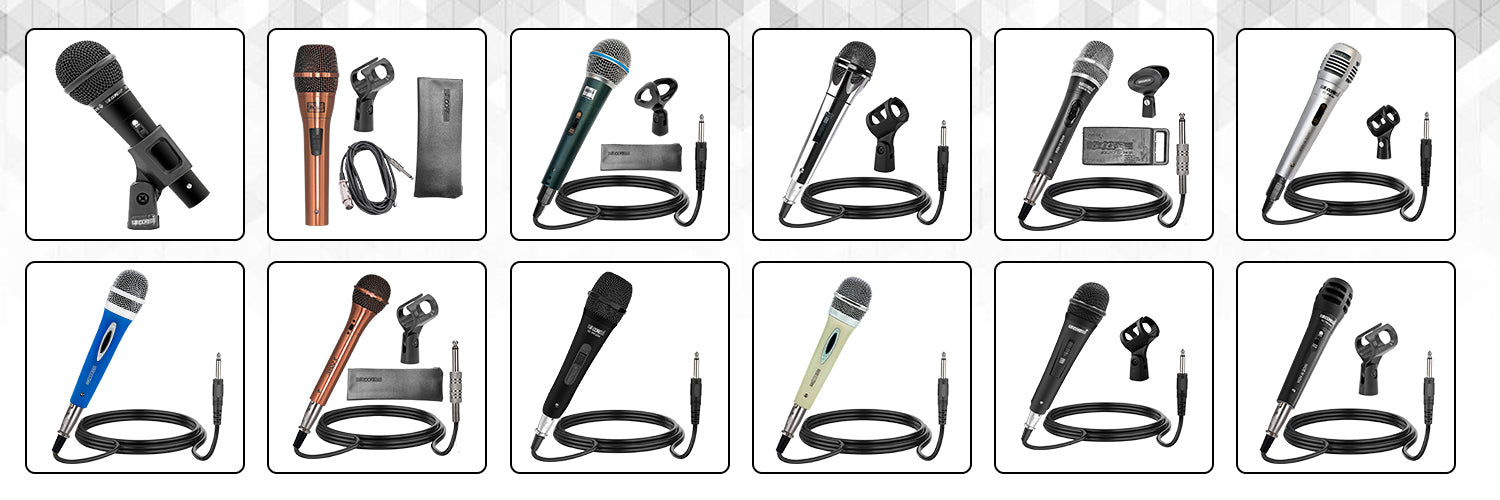
Dynamic Microphones for Every Performer
Microphones are essential tools for singers, speakers, content creators, and performers. Whether you're investing in a professional XLR microphone or looking for an easy-to-use handheld model, understanding the different types and their applications can elevate your sound quality significantly.
What is a Microphone?
A microphone captures sound waves and converts them into electrical signals. It is a crucial device in recording studios, live performances, and broadcasting, helping ensure clear and accurate audio capture.
Types of Mics
There are several types of microphones, each suited for different uses:
Dynamic Microphones
Known for durability and ability to handle high sound pressure levels, dynamic microphones are ideal for live performances and loud sound sources like drums and guitar amps. They are less sensitive than condenser mics, making them perfect for noisy environments. Popular models include the Shure SM58 and SM57.
Dynamic microphones are built for strength and reliability, making them the go-to choice for live performances, stage use, and recording loud sound sources such as drums, guitar amplifiers, and brass instruments. high sound pressure levels (SPL) without distortion, while their sturdy construction ensures consistent performance even in demanding environments. Models like the 5 Core ND-57X and ND-235X are practical examples of dynamic mics that excel in capturing powerful, clear audio from instruments or vocals under intense conditions.
Because dynamic microphones are less sensitive to subtle background noise, they are especially effective in noisy or uncontrolled environments. Their directional pickup patterns, such as cardioid or supercardioid, help isolate the main sound source and reduce feedback, ensuring focused and balanced sound output. These features make dynamic microphones a reliable and versatile tool as microphone for singing or live sound reinforcement.
Condenser Mics
Condenser microphones are known for their exceptional sensitivity and ability to capture sound with stunning clarity and detail. Unlike dynamic microphones, which are designed for durability and high sound pressure levels, condenser mics use a lightweight diaphragm and an electrically charged capsule. This allows them to reproduce subtle nuances, making them the preferred choice for studio recordings, vocals, acoustic guitars, and instrumental sessions where precision matters.
Because they can capture a wide frequency range and respond accurately to even the softest sounds, condenser microphones are ideal for professional environments that require high fidelity — such as music production, podcasting, and broadcasting studios. However, they typically require phantom power (48V) supplied through an XLR connection or an audio interface to operate.
XLR Microphones
XLR microphones are professional-grade audio devices that use a three-pin XLR connector to transmit balanced audio signals. This design helps minimize noise, hum, and interference—making XLR mics a preferred choice in both studio recording and live performance environments.
XLR microphones are widely used in broadcasting, music production, podcasting, and stage setups due to their stability and compatibility with professional audio equipment such as mixers, audio interfaces, and PA systems. Their locking connectors ensure a secure fit, preventing accidental disconnections during performances or recordings.
Handheld Microphones
Handheld microphones are designed for performance, mobility, and ease of use, making them the most recognizable and widely used type of microphone for singers, speakers, presenters, and live performers. Built to be portable and durable, they are engineered to withstand frequent handling, transportation, and on-stage conditions without compromising sound quality.
Available in both dynamic and condenser varieties, handheld microphones cater to different performance needs. Dynamic handheld mics are ideal for microphone for singing, live concerts or outdoor events, where durability and feedback resistance are essential. Condenser handheld mics, on the other hand, offer higher sensitivity and are suited for controlled environments or detailed vocal performances.
Dynamic Microphone Polar Patterns Explained
Understanding microphone polar patterns is key to choosing and using your dynamic microphone effectively. A polar pattern describes how sensitive a microphone is to sound coming from different directions around its capsule.
-
Cardioid (Heart-Shaped): This is the most common polar pattern for dynamic mics. It picks up sound primarily from the front, while rejecting noise from the sides and rear. Cardioid pattern is perfect for live vocals and noisy environments as it reduces background noise and feedback.
-
Supercardioid / Hypercardioid: These patterns offer even narrower pickup than cardioid, capturing sounds from the front with reduced sensitivity to the sides. Hypercardioid allow some rear pickup but provide excellent rejection of off-axis sounds, making them excellent for isolating vocals on stage.
-
Omnidirectional: Less common in dynamic microphones, this Omnidirectional pattern picks up sound equally from all directions and is rarely used in live vocal applications due to potential background noise.
Choosing the right polar pattern means matching how you want to isolate your voice or instrument on stage or in recordings, improving clarity and reducing unwanted noise.
Choosing the Right Microphone for Singing
For singers, choosing a microphone with a cardioid pickup pattern is essential to capture vocals accurately while reducing background noise. A popular choice is a handheld dynamic mic such as the Shure SM58, renowned for its durability and performance.
Why XLR Microphones Stand Out
XLR mics provide superior sound quality and durability, making them the preferred choice for professional settings. Pairing an XLR mic with a quality audio interface or mixer enhances sound clarity and control.
5 Core Has Dynamic Mics for Every Taste
At 5 Core, we understand that every vocalist and performer has unique needs when it comes to microphones. That's why our collection of dynamic microphones offers a variety of options tailored for different preferences and uses. Whether you need a reliable handheld mic for live singing, a robust mic for broadcasting, or an XLR dynamic microphone for studio and stage use, we have you covered. Designed for durability and consistent sound quality, our dynamic mics combine professional-grade performance with affordability for beginners and pros alike.
Dynamic Microphone FAQs
Question: What makes dynamic microphones suitable for singing?A: Dynamic mics are durable and reject background noise well due to their directional polar patterns, making them ideal for live singing and noisy environments.
Question: Why do most professional dynamic microphones use XLR connectors?
A: XLR connectors provide balanced audio, which significantly reduces electrical noise and interference, ensuring clear, high-quality sound transmission.
Question: Can I use a dynamic XLR microphone with my computer?A: Yes, but you will need an audio interface or mixer that accepts XLR inputs to convert the analog signal to digital for your computer.
Question: How close should I hold a dynamic mic when singing?
A: Generally, 1 to 3 inches from the mouth is optimal. Using a pop filter can further reduce plosive sounds for cleaner vocals.
Question: How do cardioid and supercardioid patterns differ?
A: Cardioid mics capture sound from the front and reject from the sides and rear, whereas supercardioid mics have tighter front focus and allow a small amount of sound pickup from the rear, offering better side noise rejection.
Question: Are handheld dynamic microphones suitable for studio recording?
A: While mostly used live, handheld dynamic mics are also suitable for recording certain vocals and instruments, especially where durability and noise rejection are important.


